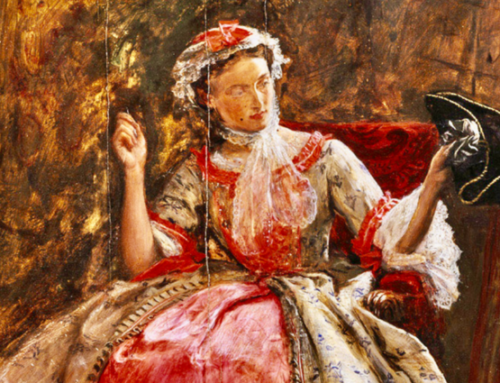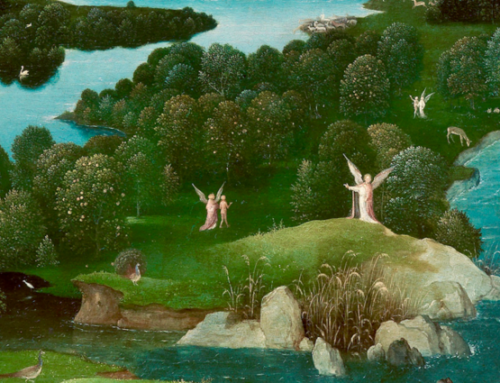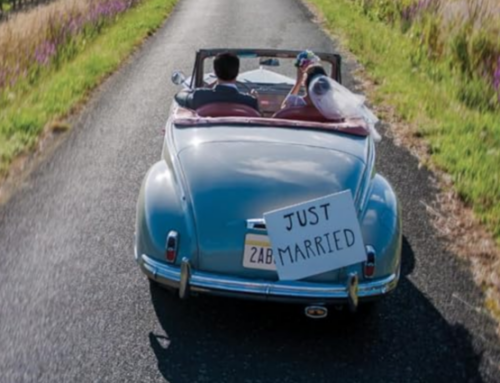Many parents, ministers, camp councillors, and even school teachers are trying to teach virtue to the young, simply by means of lists and definitions. And surely definitions are useful… eventually. But the primary means by which kids grow in virtue are their models and heroes, seen as whole characters.
 In my mid-twenties, I had an embarrassing experience, betraying a shallowness of character. I’d read Jane Austen’s Pride and Prejudice some years earlier, since it was on the list of books every educated person must read. Being male, however, I read entirely for its plot (a little dull, and why did people think it was great?). Then, some years later, I was having coffee with an old Scottish friend, who was chortling on about Austen’s “hilarious Mr. Bennet.” I couldn’t hide the awkward fact that I didn’t have a clue what he was talking about. It took me a long time thereafter to realize that I was reading “pragmatically,” for information, rather than “contemplatively,” for characters. Yet it is the characters in our stories that first shape our moral imaginations.
In my mid-twenties, I had an embarrassing experience, betraying a shallowness of character. I’d read Jane Austen’s Pride and Prejudice some years earlier, since it was on the list of books every educated person must read. Being male, however, I read entirely for its plot (a little dull, and why did people think it was great?). Then, some years later, I was having coffee with an old Scottish friend, who was chortling on about Austen’s “hilarious Mr. Bennet.” I couldn’t hide the awkward fact that I didn’t have a clue what he was talking about. It took me a long time thereafter to realize that I was reading “pragmatically,” for information, rather than “contemplatively,” for characters. Yet it is the characters in our stories that first shape our moral imaginations.
Many parents, ministers, camp councillors, and even school teachers are trying to teach virtue to the young, simply by means of lists and definitions—i.e., information. And surely definitions are useful… eventually. They help our kids (and us) see how different healthy habits fit into one whole human being: like courage in our fears, moderation in our desires, justice towards others, and so on. But the primary means by which kids grow in virtue are their models and heroes, seen as whole characters.
Kids are launched into the world helpless and needy, so at first, “it’s all about them.” They need time—seven years?—to become open to appeals to reason, and then twenty years more (if ever) to develop their distinct temperaments and talents. This maturation must engage their minds, and their first abstract question is a kind of inarticulate wonder, “What will I be when I grow up?” This truly contemplative question arises from the rational mind, seeking some purpose or model around which to organize their understanding of their universe: what Plato called “the Good,” the fundamental axiom of rational speech. Their initially vague childhood model of adulthood becomes increasingly distinct over time and forms their guiding notion of “life fully alive.” This is the star for navigating their triumphs and tribulations, their schematic for understanding all the adults around them, and eventually (if ever) their choice of a vocation.
Now, the natural hunger for icons or models of human excellence is not a cookie cutter. As the beloved pediatrician-philosopher Herbert W. Ratner used to say, human beings are social animals, with reason and free will, yet mutually dependent and designed to cooperate in a complex division of labor. So nature has an interest in humanity developing the greatest possible diversity of temperaments, talents and characters: dreamers and doers, initiators and sustainers, cautious plodders and loose-cannons, for the sake of diverse vocations all working together. And, as new parents quickly learn, kids come into the world with their own peculiar potential, somehow already there. One great challenge of parenting is discerning a child’s particular direction, however different from ours, and helping them develop a character that’s the best version of themselves, pruning harmful habits and encouraging helpful, since, by nature, we really do find our happiness in serving each other.
Many Millennials and Gen-Zers today are malformed by the hollow icon of the “unique individual,” building his/her/their/zer celebrity personality, even moment to moment, with no purpose, no obligations, no meaning. This is not a happy place. These kids had a natural hunger for a vision of human excellence, and that appetite was left starving, by failed parenting and a psychotic educational ideology. In any normal family—any adequately healthy family that perseveres in “showing up”—the child’s model of adulthood is framed by mom and dad. Kids’ developing image of adulthood therefore implicitly includes the frame of parenthood, but this assumption remains unexamined until adulthood (and may remain unexamined even then) because it’s simply too scary for completely helpless kids. Sadly, these days, it now remains too scary for too many young adults.
(Parenthetically, we are now seeing young couples, deprived of adult models in their childhood, valiantly building new families from the ground up, “by the book,” deliberately making up for their own parental deprivation with manuals and mentors. This is a truly heroic hope for the future, proof of the durability of human nature, and a confirmation of Classical “teleology.” It’s also an opportunity, for those of us blessed with families, to assist in remedial education, including the recovery of classic children’s books. Just as elderly stroke victims can recover their motor skills with infantile crawling and crayons, young parents are recovering their own nurturing by parenting with Beatrix Potter, Kate Greenaway and Rudyard Kipling.)
Which brings us (finally!) to the use of books in teaching virtue. For many kids, the first characters they encounter as characters are A. A. Milne’s phlegmatic Pooh, melancholic Eeyore, sanguine Tigger, and pedantic Owl. They see these characters replayed in their families and friends. These whole characters are knit into the “fabric of the mind” by means of concrete images. Yet even the fictional Pooh and watchful Christopher Robin are “whole people,” and therefore always a little mysterious. Even a minimal effort to draw out the mysteries of their characters can move kids past the simple plot. So, when Pooh is stuck in the door of his tree, “Is Pooh Bear really scared?” Is Pooh being brave? Or does he love his honey more than he worries about being stuck?
In my personal favorite, Kenneth Grahame’s Wind in the Willows, the characters are fuller and less simply iconic, so the contrasts they provide are almost as evocative as our real-life friends. “How are Ratty and Mole so different, yet friends?” Does Ratty enjoy showing Mole new experiences, like “messing about in boats?” Ratty always messed about in boats, so it’s nothing new for him. Does sharing boating with his new friend make him happy? Is sharing boats like sharing cookies? And maybe a caution: Should we always let friends show us new things?
The point is not to turn Wind in the Willows into a Socratic seminar. We simply need a change of emphasis, wondering about characters, rather than capturing plots. In doing so, the mystery of the same-but-different humanity emerges. So, the shy Mole has been enjoying an adventurous new life with boisterous Ratty, living all summer at Ratty’s river-bank burrow. Then, late one snowy evening, returning from an adventure in the Wild Wood, Mole suddenly catches scent of his own beloved, but long-abandoned burrow. Or rather, the scent of Home seizes him, violently. Now, at this point, no retelling this story could do it justice, so let’s just say that the grand themes of the love of home, and the tension between home and friendship, are laid most beautifully in our laps. People (even burrowing people) are all the same, yet different. No two characters could be more different than Homer’s adventurous Odysseus and Grahame’s retiring Mole, yet they would sympathize with each other’s love of home.
We do need lists and definitions of virtues, especially while kids are still young enough to memorize them. Aristotle defines “virtue” as a “habit of choosing the middle way between an excess and deficiency, in agreement with reason, as the prudent person would choose it.” And while few ever become courageous by reciting a definition, “courage is the mean between the extremes of rashness and cowardice,” we can think only that for which we have the words. Children imitate what they see, so we first understand the word, “courage,” by attaching it to Badger; “rashness,” to Toad; and “cowardice,” to the weasels. So we need the help of definitions to see, not simply characters to imitate, but the particular extremes that we need to address in ourselves.
We all need the “middling habits” of courage, moderation, and justice because we all live with fears, desires, and friends. We must all grope our way in choosing the proper means for our proper ends, so we need the developed habit of prudence; and we must all bear proper reverence toward the Divine, and therefore the habit of piety. So, when challenged in any of their half-baked habits—persistence, attentiveness, congeniality, loyalty—it will be that inner urge “to be like” that will empower our kids to “push back” against their own random impulses, developing the “integrity” or unity of character essential for a meaningful life.
Kids are really diverse, and they need to feel at home in themselves, not as unique celebrities or according to the mantra that “everybody is special,” but by finding their own vocation and contributing to their developing friendships—their families, communities and country. So good children’s books and the Great Books provide a treasury of iconic characters, providing our entire civilization with a concrete (so to speak) vocabulary of endurance, loyalty, and excellence in all its diversity and failures (including Mr. Bennet’s irony). This Western Canon is a cultural defense of personal freedom and individuality because of the almost inexhaustible diversity of its models. Every kid can find heroes with whom they in particular identify, at all their different stages and circumstances of life.
Character education can reach beyond literature, into the visual arts and music. Hals’ Laughing Cavalier or Rembrandt’s Alexander the Great, likewise Mendelsohn’s Midsummer’s Night Dream or Bach’s St. Matthew’s Passion, can warm children’s real affection and awe for inexhaustible humanity itself. Likewise, architectural styles can stoke wonder in the way character can be expressed in marble, granite, and oak. A wonderful resource for parents here is the Sir Kenneth Clarke’s old BBC Television series, Civilization, available on DVD.
One last word on this notion of “integrity” or “unity of character.” Aristotle defines “virtue” as a habitual mean between passionate extremes, agreeing with reason, “as the prudent person would choose it.” The fact that Aristotle can refer to “the prudent person” that way suggests (or insists) that there’s something primary or fundamental in that. We see the virtuous person as one “whole character” or “person of integrity”—unified. The vicious or malicious may be clever, but shifted by lies and passions, they cannot (by definition) be one whole. To be “the prudent person” means to live one consistent life of constant, well-ordered loyalties and purposes, through all changing and sometimes perverse circumstances of life. This integrity is what Socrates called “the examined life,” or Irenaeus of Lyons (student of a student of St. John the Evangelist) called being “Fully Alive.”
Now, at ground level, Greek and Roman kids would fix largely on a mythic warrior heroes like an Achilles, Theseus, Romulus, or Aeneas, playing at the Trojan War or Founding of Rome. Yet for the Ancient Classical philosophers, the Human was primarily the Idea, the Species Man, like a marble statue. So the parade of peculiar personalities in Plato’s Socratic dialogues constitutes a kind of taxonomy of pathologies, pointing beyond the ugly Socrates. This is in keeping with Durkheim’s dictum, we learn physiology by studying pathology; we learn what the parts are in seeing them break down. Likewise, from this general anthropology arises Aristotle’s belief in the priority in tragedy of universal plot over idiosyncratic character.
Then, as historians Christopher Dawson and Rene Girard explain, the Judeo-Christian revelation “liberated human personality.” Humanity had been seen as bad copies of an abstract blueprint, but then we came to understand ourselves as the unique creations of a loving Creator, unrepeatable wildflowers in a vast meadow, rather than porcelain roses. This threw open a boundless range of human possibilities, celebrating all honest vocations as equally happy in the service of God and Man: not just warrior-kings and temple-priests, but “butchers, bakers, and candlestick makers.” It took over a thousand years for this new awareness to permeate Western civilization, following the anarchy of the fallen Roman Empire, but the marriage of Christian Chivalry and Classical Reason came to full flowering in the Renaissance: Petrarch, Boccaccio, Montaigne, Dante, Chaucer, Cervantes, More, Erasmus, and the pinnacle of Christian Humanism, Shakespeare.
Aristotle’s definition still holds: “Virtue is choosing as the prudent person would choose,” though now there are so many different models of prudence, given different temperaments, aptitudes and circumstances. Growth in virtue still requires the cultivation of courage in our fears, moderation in our pleasures, justice in our public dealings, congeniality in our personal relations, and liberality in our finances. And despite the boundless diversity of characters, we still “see” prudent people, once we look for them: the uncle who understands, the doctor who listens, the real estate agent who really wants the house right for you, the mechanic who fixes only what’s broken—in short, people of integrity and attentiveness: “the prudent,” for all their differences. The vast catalogue of characters in our great literature prepares kids for seeing all this, marvelling, and striving to join in.
The Imaginative Conservative applies the principle of appreciation to the discussion of culture and politics—we approach dialogue with magnanimity rather than with mere civility. Will you help us remain a refreshing oasis in the increasingly contentious arena of modern discourse? Please consider donating now.
The featured image is “Two reading children” (1845) by Christen Købke, and is in the public domain, courtesy of Wikimedia Commons.







What a lovely example of “evangelizing without saying a word.” Even though you said many, and all were attractive because of wisdom, depth, and a relatable thread of humor and humility. You did not say, please visit Angelicum Academy to learn more about sharing in the Great Books Way… . But I felt compelled to do so!
Reading your essay reminded me of several of my own “flat readings”. I read widely as a child and teen and adored hefty books. But read in solitude, without benefit of robust discussion in public school classes or home.
As an older reader and Catholic convert, with a more mature and integrated world view, I have been on a mission to revisit books that I raced through in my youth or childhood. (Although I do not know if I can overcome the trauma of ‘hating’ a book for for the first time: oh yes, am looking at you, Anna Karenina!).
After mulling over this page, I glanced at your bio. And realized that three times this past week, while traveling in my van, I have heard the voice of Fr Fessio, inviting listeners to learn more about Angelicum Academy!
And here you are, a moderator for that excellent program. Parents, teachers, and readers of all ages should visit that website to dive into more catechesis about Good Books and Good Books. The website and magazine are rich with thought. Plus, classes for everyone. Young to college and beyond.
Happy reading, pondering, discovering! And thank you, Mr. Woodard, for this essay.
K-12 and on to 99 years old: Read the Bible, with your children, every day. Because only the Catholic Church reads the lectionary any more. It is our necessary, but not sufficient condition to pass the Republic to our children.
Below is the best reading list for k-8 that I’ve seen, and I’ve been looking for a very long time. So I’m reading these with my 6th and 7th grade children. I always read the oldest book first – it’s stood the test of time.
https://www.thegospelcoalition.org/blogs/justin-taylor/a-complete-classical-christian-school-reading-list-grades-1-8/
New mom and found this website through Memoria Press somehow. I’ve enjoyed getting these articles to my email for several months now, and every few weeks there is always one article that sticks out to me the most every and seems to be the one I need to hear the most! This would be that article for me, and I will be forwarding to my husband!! Thank you SO much for all the work you’ve done to keep classical education alive. God bless you.